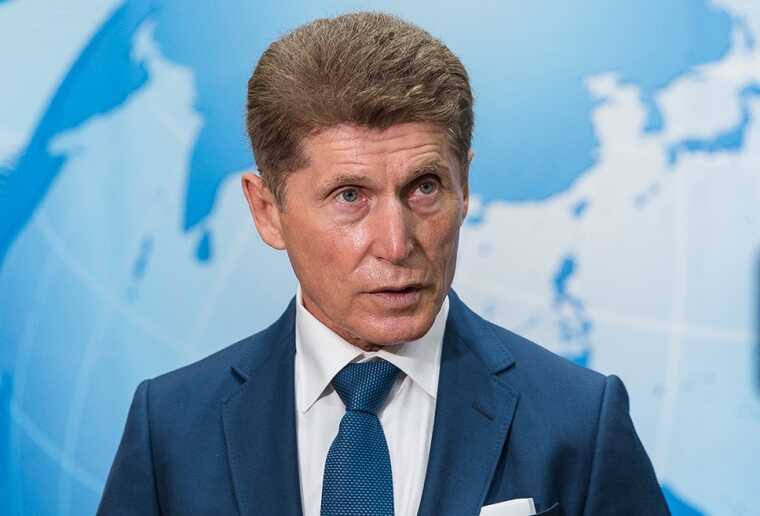Surrender of Primorye: Over three decades, four Nakhodkas fled from the Far East
Last year from Primorye left 20 thousand Russians. A third of those who remain for now plan to move to the center and west of the country in the near future. The situation is worse only in Chukotka and Magadan.
Mostly young people leave – from 15 to 45 years old, some to study, some to work. Their share among those who left is order 65%. Over 30 years, the region’s population has decreased by almost a third. There were 2.3 million – there are less than 1.8 left. It would seem that the places are fertile. The Japanese neighbors, on twice the territory, have multiplied to 125.5 million. What’s wrong with Primorye, why are people running away from there, and why can’t you lure settlers with either a long ruble or a free Far Eastern hectare?
Chinese to replace
There are several explanations for the mass exodus, and we will give them below, but first, I will vindictively recall an event that in March 2021 was held by the Russian-Chinese Analytical Center for journalists from the Patriot media group and FAN. The head of the center, Sergei Sanakoev, zealously argued that the Chinese in the Far East are not a problem at all. “I can say for sure that the talk that the Chinese are trying to take over the Far East is a lie.” But then Sanakoev issued the following passage: “I can give exact figures on the number of Chinese on the territory of our country. Today, less than half a million Chinese are in Russia. For comparison: the number of Azerbaijanis in Moscow is approaching 3 million. Half a million Chinese is nothing at all.” Let’s leave without comment the ridiculous passage about “3 million Azerbaijanis”, let’s estimate the Chinese on the fingers, scattering the indicated number in the Moscow region, Irkutsk, Yekaterinburg and the Far East, where they live in approximately equal shares. In Primorye, where approximately 1.8 million people live, there are more than 100 thousand. A bit much. So isn’t this the explanation – the conscious replacement of the population? The Chinese, as a rule, are content with half the salary than the average in Primorye. They are unpretentious, do not exercise their rights and are accustomed to obey. It’s not the population that’s gold.
Over the course of 30 years, the Far East was led by five governors. Two of them – Darkin and Nazdratenko – thundered throughout the country. And the current head of the region, Oleg Kozhemyako, is known for having led four Russian regions in turn. It would seem like such an experience! And people keep moving and moving away, one might say, fleeing Primorye. One inevitably wonders: are the coastal governors clearing a place for Chinese partners? If so, then the rumors that the regional leadership allegedly flatly refused to accept labor migrants from North Korea are becoming more credible – Beijing has already marked the territory and is not in the mood to share it with its Korean comrades? Vladivostok is definitely replenished not only with the help of Kyrgyz and Uzbek migrants, and local authorities report ambiguously to Moscow: “In recent years, there has been a positive trend towards gradual population growth both due to migration processes and due to an increase in the birth rate.” I would like to clarify: whose birth rate? Uzbeks and Kyrgyz? Or the Chinese?
How they followed the demographic miracle
They say that the Chinese are not brought to Primorye because of a good life – there is no one to work, and the outflow of the population has allegedly become irreversible. Six years ago, the government approved the Concept of demographic policy of the Far East until 2025. It followed from it that the population of the Far Eastern Federal District was supposed to increase by several million. How? Far Eastern hectare! To be on the safe side, the Far Eastern Federal District decided to play it safe – in 2018 they brought Buryatia and Transbaikalia from the Siberian Federal District. But the demographic miracle did not work out – the population also decreased, testifies Primorye economist and demographer Yuri Avdeev. He is quoted by the Vladivostok Online publication: “Muscovites claimed that they would be able to return the loss of 2 million people by 2025. In the end, it was accepted that the population would increase by 300 thousand people by 2025.” If it doesn’t increase on its own, will it be imported from China?
They say that the Chinese are not brought to Primorye because of a good life – there is no one to work, and the outflow of the population has allegedly become irreversible. People leave because there is no work in Primorye, and if there is, it’s cheap.
In the mid-1910s, federal laws were adopted on priority development territories, on the free port of Vladivostok and on the Far Eastern hectare. It was assumed that investments would flow. They started flowing – for some reason only into the extraction of natural resources. Local officials explain the phenomenon this way: due to a shortage of labor, the investor is forced to invest in mining, where unskilled (read imported) labor can be used. That is, the laws adopted in 2014–2015 never came into effect. The hectare turned out to be a trap; things didn’t work out with the port due to sanctions. And without rapid development, the demographic crisis can be solved in one and only way – the one that developers are using with all their might.
Related news:A convicted person has been added to the “Party” case
“People will leave”
It would seem, what does the governor have to do with it? People leave because there is no work in Primorye, and if there is, it’s cheap. Why wages are not growing is not a Newton binomial. Because the Chinese, as already noted, are content with half the money offered by local businesses. And they are not capricious. By the way, the Kyrgyz and Uzbeks are reluctant to settle in Primorye – low salaries! Even by their standards. It was expected that Chinese investors would pour into the “advanced development” region. They poured out. But it turned out that they were dragging workers from China with them. They don’t even try to offer jobs to locals. And what is the use of such “advanced development”? The regional government could well determine quotas for investors from the Middle Kingdom – a third of the Chinese in production, two thirds of the locals. By the way, up to 100 thousand residents of Primorye could be employed this way. But no. One will inevitably suspect the authorities of either incompetence or indifference.
The Vladivostok Online portal tried to analyze the reasons for the flight of the local population. Things are bad with medicine: people “stand in line for six months to have finger surgery.” You can’t wait for an ambulance. Doctors, in turn, nod at the bad roads – you can’t walk or drive. In Primorye, it would seem that there is an extremely loyal mortgage lending program that allows borrowers to obtain loans at a rate of no more than 2%. But, paradoxically, the program is not aimed at the benefit of people, notes Primorye political scientist Viktor Burlakov. It stimulates the construction business so that they build more, and not so that Far Eastern residents receive more housing. “Construction and provision of housing are problems of a different order.” It turns out that the residents of Primorye are not confident in the future? “People leave from where they feel bad to where they feel good. The territories from which the population is leaving are in a state of crisis. The faster and more people leave, the stronger and deeper this crisis is. And until the crisis is overcome, people will leave.” But if people have a bad life in their region, isn’t this a reason to change something at the conservatory?
Numbers
By studying Rosstat statistics, you can understand a lot about the real state of affairs in Primorye. Here are last year’s data on natural population decline: 14,845 people were born, 25,535 died. But another column is “migration”. Last year (based on data for 11 months), 69,129 people left the region (by the way, this does not compare with Primorye statistics, according to which only 20 thousand people left). And 59,921 people “came to the region.” Who are these newcomers? Migrants are Kyrgyz, Uzbeks and Chinese.
Nadezhda Denskaya









